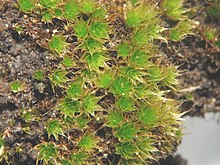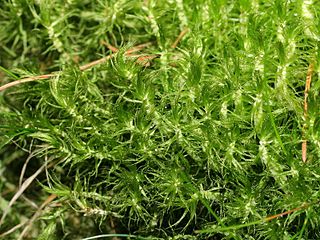
Dicranum is a genus of mosses, also called wind-blown mosses or fork mosses. These mosses form in densely packed clumps. Stems may fork, but do not branch. In general, upright stems will be single but packed together. Dicranum is distributed globally. In North America these are commonly found in Jack pine or Red pine stands.
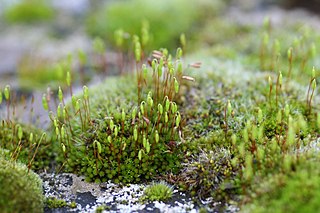
Bryaceae is a family of mosses.

Funaria hygrometrica, the bonfire moss or common cord-moss, is a type of water moss which grows on shady, moist soil. It can also be found on moist walls and the crevices of rocks and places where recent fires have taken place. It has been reported to grow in Niagara Cave, an artificially illuminated cave devoid of natural light. Under such conditions, its growth form changes so that the internodes lengthen and the leaves become longer and narrower.

Bryum is a genus of mosses in the family Bryaceae. It was considered the largest genus of mosses, in terms of the number of species, until it was split into three separate genera in a 2005 publication. As of 2013, the classification of both Bryum and the family Bryaceae to which it belongs underwent significant changes based on DNA studies.

Leptodictyum riparium, commonly known as Kneiff's feathermoss, streamside leptodictyum moss, or knapwort, is a species of moss of cosmopolitan distribution. The only places it is not found are the Pacific Islands and Australia. It is commonly found growing in the lakes and rivers of Minnesota and is also present in Mexico, Guatemala, the Bahamas, Cuba, Jamaica, Haiti, the Dominican Republic, Venezuela, Peru and Brazil.

Tortula is a genus of mosses in the family Pottiaceae.

Mniaceae is a moss family in the order Bryales.

Thuidium delicatulum, also known as the delicate fern moss or common fern moss, is a widespread species of moss in the family Thuidiaceae. It is found in North and South America from Alaska to Brazil.

Plagiomnium cuspidatum, also known as toothed or “baby-tooth” plagiomnium moss and woodsy thyme-moss, is a species of thyme-moss that originated in North America, but can now also be found throughout Middle America, Africa, Northern and Southern Asia, and Europe.

Barbula unguiculata is a species of moss belonging to the family Pottiaceae.

Ptychostomum capillare, formerly designated as Bryum capillare, is a species of moss belonging to the family Bryaceae. It is known as capillary thread-moss.
Leptobryum pyriforme is a species of moss belonging to the family Bryaceae.
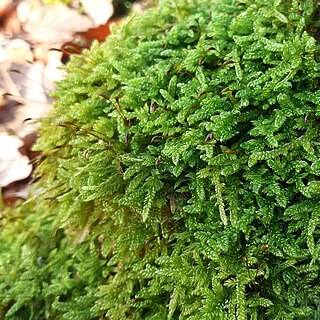
Hypnum is a genus of mosses belonging to the family Hypnaceae.

Ptychostomum is a genus of mosses belonging to the family Bryaceae. It has an almost cosmopolitan distribution.
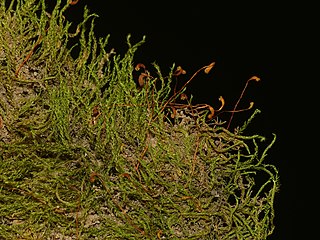
Hygroamblystegium varium is a species of moss in the Amblystegiaceae family. It has a cosmopolitan distribution.
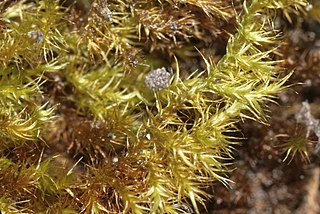
Campylium chrysophyllum is a species of moss in the Amblystegiaceae family. It has a cosmopolitan distribution.

Brachythecium salebrosum is a species of moss in the Brachytheciaceae family. It is widely distributed throughout the world, except for in South-America and in tropical regions.

Fissidens taxifolius is a species of moss in the Fissidentaceae family. It has a cosmopolitan distribution.
Gemmabryum is a species of moss in the family Bryaceae. It was separated from the genera Bryum and Brachymenium in 2005. It has been argued that the correct name for the genus is Osculatia.
